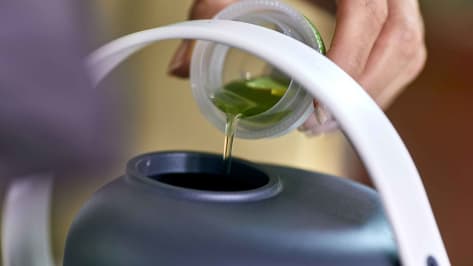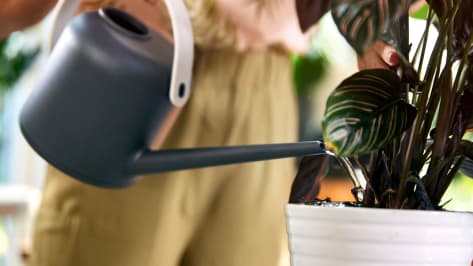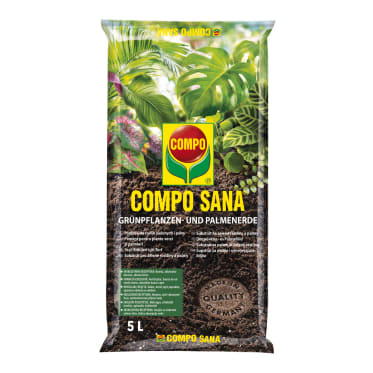Frequent search terms

- COMPO
- Guide
- Plant Care
- Indoor plants
- Houseplants: Location and watering
Part 1: Basic knowledge
Houseplants: Location and watering
Basically, they all just need light and water, don't they? Houseplants don't always make things easy for us. They come from regions of the world that are all very different and therefore have their own specific preferences when it comes to location, soil and watering. To ensure your green roommates stay healthy and young for a long time, we want to show you the most important basics of houseplant care. Part 1 is all about the right location and watering.
The right location for houseplants
Light and shade
They were all out in the open somewhere in the world. Plants have adapted to very different conditions in their original habitat in terms of natural light. Any plant that has been at home under the dense canopy of a rainforest has usually developed large, thin leaves to make do with the sparse residual light. On the other hand, cacti and palms need the blazing sun to develop well. So, if you want your houseplants to stay healthy for a long time in your home, then you need to recreate the conditions of their natural habitat.

Sunny locations
A location fully exposed to sunlight means a south-facing or south-east-facing window with a good five hours of sunshine per day. A bright spot can usually also be found 1-2 m from a south-facing window, but not every flat has one of those, either. Nevertheless, some houseplants need precisely that to stay healthy.
Attention!
Only a few houseplants behind a windowpane will tolerate the blazing midday sun on hot summer days, such as cacti and succulents. All others should be placed a few metres away from the window.
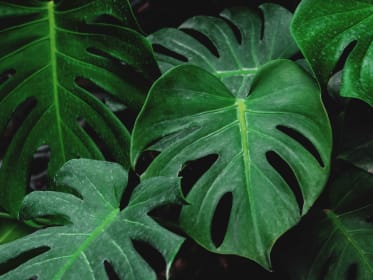
Bright to semi-shaded locations
The typical location in a living room is bright to semi-shaded and fortunately these are just the right conditions for many houseplants. Candidates for a semi-shaded spot don't usually appreciate direct sunlight, so a place at an east- or west-facing window is ideal. They can also make themselves at home about 2-4 m away from a south-facing window because the light intensity is much lower there. The semi-shaded location should provide at least three hours of sunshine each day.
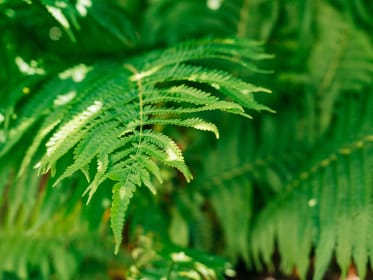
Shady locations
It's often the darkest corners that people want to decorate with houseplants. And fortunately, many plants native to forest areas are ready for precisely that. In addition, you don't even have to put the plants in the shade – the windowsill of a north-facing window is exposed to less than three hours of sunlight a day. Houseplants that don't need much light will also do well 4-6 m away from the nearest south-facing window.
Watering houseplants properly
Soil and room humidity
Similar to the location, your plant's water requirements are also determined by its natural habitat. For example, succulents are true survivors and start to rot quickly if there's too much water. Most palm trees develop long roots in their natural habitat. But in a planter this isn't possible, so they need to be watered regularly. In addition to the natural behaviour of the plant, the indoor climate and season are also key factors.
Houseplants need........
| Houseplants need | Plenty of water if... | Not much water if... |
|---|---|---|
The room temperature rises due to the sun or heated air | They are in a cool, dark room | |
They are in a growth phase | They are in a dormancy phase | |
Their pot is small and already well rooted | They are in a large pot with enough fresh soil | |
The humidity in the room is low | The humidity in the room is high | |
They have been repotted in sandy soil | Their rotting roots are causing a problem |
Simply watering the same amount all year round is therefore not recommended. In principle, it's advisable to water as needed based according to your intuition. Since the soil's surface dries out quickly in the pot due to heated air, it's advisable to push your fingers a little deeper into the soil before reaching for the watering can. If you know the weight of your plant, lifting the pot can also be a reliable indicator of how much water is still in the soil. In any case, it's advisable to take the plant out of its planter for watering to allow excess water to drain off immediately.
- These plants prefer rather moist soil: The fiddle-leaf fig, strelitzia, calathea, sword fern, elephant ear, kentia palm, areca palm, spathiphyllum, arrowroot, pothos and weeping fig tree.
- These plants prefer rather little water: The sansevieria, aroid palm, French peanut, spurge, ponytail palm, yucca, jade plant, friendship tree, monstera and dragon tree.
More on caring for houseplants
Our products for your non-flowering plants



